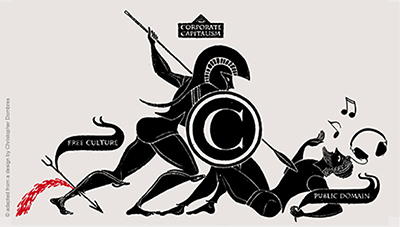John Richardson (University of Turku): Closer Reading of Musical Sounds in the Digital Age
Duration: 43 mins 39 secs
Share this media item:
Embed this media item:
Embed this media item:
About this item

| Description: |
In this paper I review uses and definitions of close reading in music research and bordering fields in the context of contemporary digital culture. I argue that close reading practices should be elevated in status to something resembling cross-disciplinary methods like ethnography and discourse analysis. One reason for the apparent neglect of close reading is that it is perceived as hermetic to individual arts disciplines and implicitly promoting Kantian autonomy. New humanities approaches to close reading complicate such assumptions, however, by taking into account such factors as affective response and physical as well as discursive situation. In addition, close readings in new humanities research frequently take inter-art forms as their subject matter (e.g., films, gallery installations, environmental sound art, virtual reality), which demand that the analyst attend to crossmodal exchange. Following Mieke Bal, I argue that a concept- rather than theory-based approach has the greatest potential in cultural analyses because it is more adaptable to objects of study. The notion of framing, again from Bal but also Gregory Bateson and Erving Goffman, holds considerable potential as a foundation for readings that interrogate their underlying assumptions while also “containing” all the relevant layers of an analysis. While close reading and narrative-based thinking are responses to printed media in the predigital world and essential means of accounting for experiences in deep and context-rich ways, we should nevertheless look also towards digital culture and what some have called hyper reading (James Sosnoski, N. Katherine Hayles), database thinking (Lev Manovich), and multimedia mentality (Nicholas Cook) in order to expand our ideas about cultural analysis in the present cultural climate. I argue, therefore, for a synergy of traditional and emerging approaches in order to grapple with questions relevant to current research. After Bateson and Gibson, I make a case for an ecology of close reading that, moreover, overlaps with matters of concern in ecocritical and ecomusicological research. The presentation is furnished with examples that illuminate the matters at hand.
|
|---|
| Created: | 2014-04-14 11:52 |
|---|---|
| Collection: | Creativity, Circulation and Copyright: Sonic and Visual Media in the Digital Age |
| Publisher: | University of Cambridge |
| Copyright: | Glenn Jobson |
| Language: | eng (English) |
| Keywords: | CRASSH; John Richardson; |
| Abstract: | In this paper I review uses and definitions of close reading in music research and bordering fields in the context of contemporary digital culture. I argue that close reading practices should be elevated in status to something resembling cross-disciplinary methods like ethnography and discourse analysis. One reason for the apparent neglect of close reading is that it is perceived as hermetic to individual arts disciplines and implicitly promoting Kantian autonomy. New humanities approaches to close reading complicate such assumptions, however, by taking into account such factors as affective response and physical as well as discursive situation. In addition, close readings in new humanities research frequently take inter-art forms as their subject matter (e.g., films, gallery installations, environmental sound art, virtual reality), which demand that the analyst attend to crossmodal exchange. Following Mieke Bal, I argue that a concept- rather than theory-based approach has the greatest potential in cultural analyses because it is more adaptable to objects of study. The notion of framing, again from Bal but also Gregory Bateson and Erving Goffman, holds considerable potential as a foundation for readings that interrogate their underlying assumptions while also “containing” all the relevant layers of an analysis. While close reading and narrative-based thinking are responses to printed media in the predigital world and essential means of accounting for experiences in deep and context-rich ways, we should nevertheless look also towards digital culture and what some have called hyper reading (James Sosnoski, N. Katherine Hayles), database thinking (Lev Manovich), and multimedia mentality (Nicholas Cook) in order to expand our ideas about cultural analysis in the present cultural climate. I argue, therefore, for a synergy of traditional and emerging approaches in order to grapple with questions relevant to current research. After Bateson and Gibson, I make a case for an ecology of close reading that, moreover, overlaps with matters of concern in ecocritical and ecomusicological research. The presentation is furnished with examples that illuminate the matters at hand.
|
|---|---|

